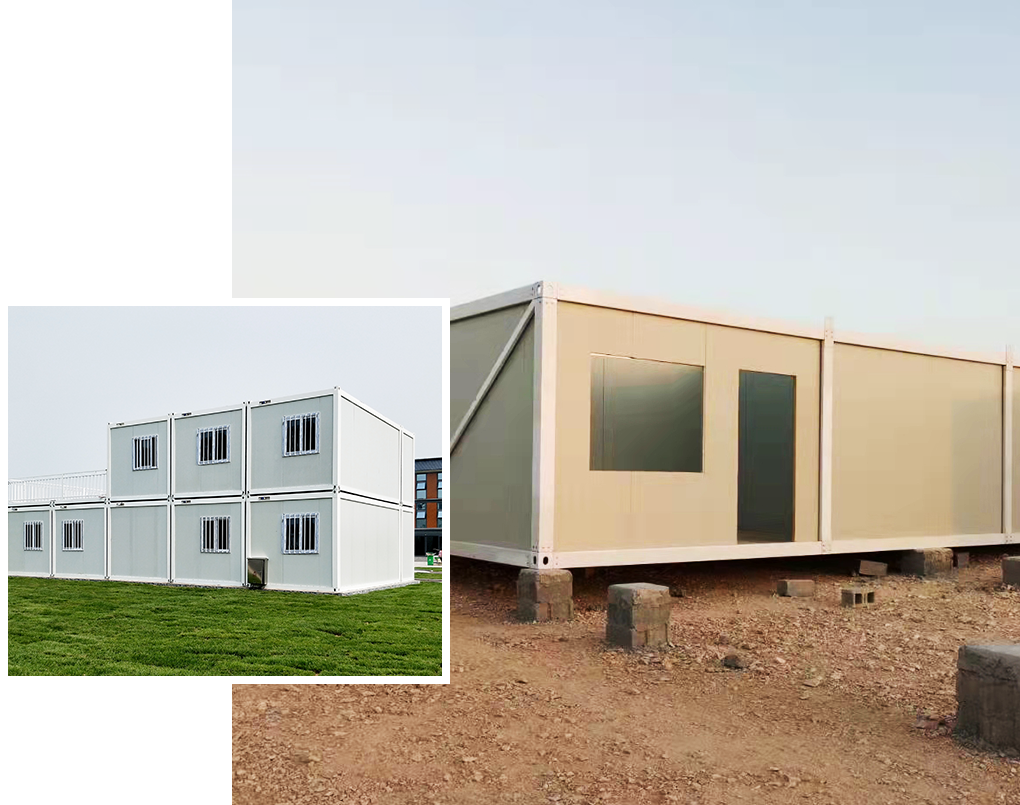Container plants offer a quick, cost-effective and sustainable solution for rebuilding communities and helping those in need
The recent trend of using container plants in post-disaster reconstruction is becoming increasingly popular as it provides a quick, cost-effective and sustainable solution for rebuilding communities and helping those in need.
Disasters such as earthquakes, hurricanes and typhoons often result in extensive damage to buildings and homes. The rebuilding process can be time-consuming and costly, often taking months or even years to complete. At the same time, the lack of proper shelter for the affected population often leads to further suffering and health problems.
Container plants solve this problem by providing fast and efficient housing. As the steel structure warehouse factory, our company's container houses are evolved using the same standard dimensions as international shipping containers, which are welded to connect the uprights and top and bottom beams. There are separate roof and ground systems, which are connected together by columns with bolts and have drainage pipes in the four connecting corner columns to divert rainwater from the roof to the ground. The roof system and the ground system are plugged together by wall panels as wall insulation system, and doors and windows are opened at appropriate locations, which can achieve all-round heat insulation and waterproof and leak-proof. After optimizing the design of box room materials, a container home can meet the needs of construction sites in China such as engineering camps, military camps, temporary shelters in disaster areas and temporary schools. It is characterized by easy transportation and installation, beautiful and atmospheric appearance, can be made into a three-story high building, good seismic performance They are made of recycled transportation containers, which are strong, durable and readily available. These containers can be easily transported to the disaster site and quickly assembled into a functional structure. Container plants can be customized to meet the specific needs of the community, such as adding insulation, windows, doors, and even electrical and plumbing.

In addition to providing fast and efficient housing, container plants offer sustainability benefits. They are made from recycled materials and are inherently recyclable, reducing the amount of waste generated by post-disaster reconstruction. In addition, they are designed to be more energy efficient, reduce the carbon footprint of the rebuilding process, and provide a healthier living environment for the people who live in them.
Another advantage of container plants is their cost-effectiveness. Compared to traditional construction methods, the use of container plants can result in significant cost savings. This is because they are mass-produced in factories, reducing the time and labor required to build each unit. In addition, because they are made from recycled materials, they are cheaper than traditional construction materials.
Finally, container plants offer flexibility in design and layout. They can be stacked, combined and configured in a variety of ways to meet the specific needs of each community. This allows for the creation of unique and functional structures that can accommodate different numbers of people and various types of activities.
In short, the use of container plants in post-disaster reconstruction provides a quick, cost-effective and sustainable solution to help rebuild communities and provide a safe and comfortable living environment for those in need. As the trend toward the use of container plants continues to grow, they are likely to become an increasingly important tool in post-disaster reconstruction efforts around the world.
 English
English  français
français  Deutsch
Deutsch  tiếng việt
tiếng việt  русский
русский  Español
Español  العربية
العربية  Latinae
Latinae  Indonesia
Indonesia 



